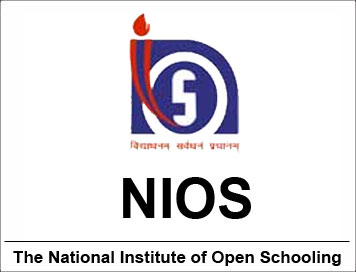
(Download) NIOS Syllabus Of History Senior Secondary
Total Reading Time : 240 Hours
Max. Marks 100
Number of Papers
One
RATIONALE
History is the scientific study of human beings and the
evolution of human society in point of time and in different ages. As such it
occupies all important place in the school curriculum. It is, therefore, taught
as a general subject forming a part of Social Science both at the Middle and the
Secondary Stages. At the Middle Stage, entire Indian History is covered, while
at the Secondary Stage, the land marks in the development of human society are
taught.
At the Senior Secondary Stage, History becomes an elective
subject. Its main thrust is to bridge the gap between the presence of
change-oriented technologies of today and the continuity of our cultural
tradition so as to ensure that the coming generation will represent the fine
synthesis between change and continuity. It is, therefore, deemed essential to
take up the entire Indian History from the Ancient to the Modem period for
Senior Secondary Stage.
The rationale for taking up the teaching of History at this stage is :
1. to promote an understanding of the major stages in the evolution of Indian
society through the ages.
2. to develop an understanding of the historical forces responsible for the
evolution of Indian society in the Ancient, Medieval and Modem times.
3. to develop an appreciation of
(i) the diverse cultural and social systems of the people living indifferent
parts of the country.
(ii) the richness, variety and composite nature of Indian culture.
(iii) the growth of various components of Indian culture, legitimate pride in
the achievement of Indian people in. different parts of the country.
(iv) the process of change which evolved as a result of interaction with other
cultures.
4. to identify the fissiparous trends which hampered the growth of the Indian
nation in different periods.
5. to recognize that the Indian culture has not remained and
developed in isolation, rather was a result of a synthesis of different cultures
and to understand the contemporary process of change, continuity and
development.
6. to remove from the minds of the younger generation
prejudices and complexestransmitted from the biased interpretation of History,
the social environment and the accident of birth.
7. to develop an appreciation of the contribution made by the
people from all parts of the country in the making of the national heritage.
8. to foster proper understanding of the contemporary
problems of India in historical perspective so as to develop an enlightened
citizenship for active participation in the establishment of a just social
order.
9. to inculcate scientific temper and objectivity to the
study of India’s past in order to relate to the present.
The study of History at this stage is intended to initiate
and introduce students to the ‘Elements of Historical Methodology’ as also how
the historian thinks and works. For this, he should be acquainted with the
various types of sources which form the basis of history and develop the
competence to evaluate the reliability of the sources.
APPROACH
Keeping in view the implications of the National Policy on
Education (May, 1986, PP. 3,4) providing access to education of a comparable
quality for all students, irrespective of caste, creed, location or sex and the
Programmes of Action (August, 1986, P. 144) emphasizing the immediate need for
introducing the curricular change in the content of history essential to nurture
national identity, protect, preserve and promote our common cultural heritage,
the approach to the teaching-learning of History at the +2 Stage (Senior
Secondary) will highlight the following:
1. The new focus will be on the socio-economic and cultural
development of man in society. The political developments and dynastic
treatment, which has been hitherto the main thrust in the teaching-learning
process, will no longer be given undue emphasis.
2. The emphasis at this stage will be laid on the development
of a composite culture and national integration by highlighting the contribution
of the people from all parts of the country through the ages. The development of
the components of composite culture has assumed different forms in different
periods of Indian History. In Ancient and Medieval India, the cultural identity
and unity formed the main basis whereas in Modern India, the political
unification during the British rule constituted the main plank of the composite
culture which was strengthened further with the integration of the Princely
States with the India Union.
3. It is necessary to highlight the role, the suffering and
sacrifice of the people in the struggle for freedom against the British rule
irrespective of religion and region.
4. Other important areas include the removal of social evils
and emancipation of women in modern India.
The study of History at this stage will not remain confined
to the reading material alone. The whole process will be activity oriented with
more emphasis on the self learning activities of the learners. To create further
interest in the study of History frequent use will be made of audio-visual aids
(T.V.-CCTV), maps, charts, time line, genealogical tables and the learner will
be required to study historical geography of India and undertake field trips
wherever feasible. The development of the entire process of learning History
will take place with the close co-operation and active participation of the
learner during the contact programmes.
Each module of the course (Unit and Sub-Unit) has been
divided into two parts-the General Foundation Units and the Certification Units.
The General Foundation Units provide a comprehensive view of Indian History in
chronological sequence for proper understanding of the main events of Indian
History in self-contained units. The Certification Units are to be studied in
reasonable depth including interpretation critical thinIdng and balanced views
for eItemal examination at the Senior Secondary level.
SYLLABUS IN OUTLINE